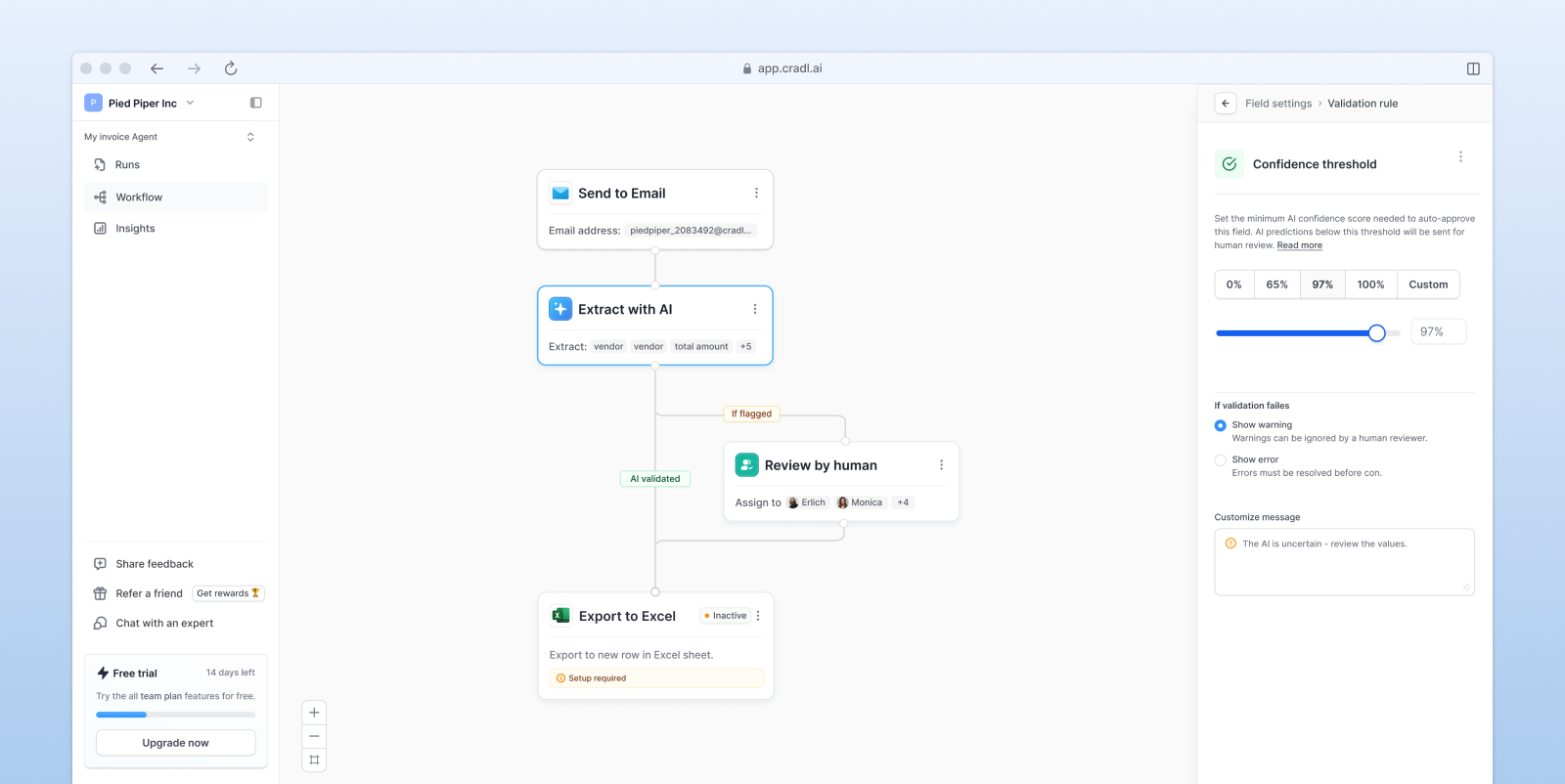Large Language Models (LLMs) are changing how we extract information from documents — not just reading text, but actually understanding it. For no-code developers and automation builders, this opens up powerful new ways to process invoices, forms, and PDFs with minimal setup. But before replacing traditional OCR with LLM-based tools, it’s important to understand both their strengths and their blind spots. This article breaks down how LLMs can be used for document understanding, where things can go wrong, and how to build reliable, scalable workflows

If you’ve ever tried to pull structured information out of a PDF or scanned document, like getting totals from invoices or names from contracts, you’ve probably bumped into OCR tools. They can copy text from images, but they don’t understand what they’re reading.
That’s where large language models (LLMs) come in. They don’t just see the words. They interpret them.
This opens up a lot of new automation possibilities, especially for no-code developers. But before you trust an LLM to extract critical business info, there are a few things you should know.
Traditional OCR works like a scanner with copy-paste: it finds text on a page and spits it out.
LLM-based OCR works more like an assistant. You can ask it, “What’s the total on this invoice?” or “Who is the sender of this letter?”, and it will find and return that specific info.
The LLM version is smarter and more flexible. It can handle different layouts, labels, and wording. But it’s also riskier if used blindly.
LLMs are good at guessing. Sometimes too good.
If part of a document is blurry or missing, a language model will often “fill in the blanks” with what should be there. This is called hallucination, and what makes it dangerous is that it is often very subtle:
The problem? These mistakes often look correct. If you’re using the output in an automation, you may not notice until something breaks or until incorrect data gets stored.
Unlike traditional OCR tools, LLMs don’t give you a confidence score out of the box. So how can you tell if the output is reliable?
Here’s the trick: you can infer confidence based on how the model chooses its words, even if it doesn’t say so directly.
For example:
Some tools look at how certain the model was when choosing each word and turn that into a confidence estimate, usually a percentage per field. These aren’t perfect, but they help you decide when a human should double-check.
In practice, you don’t need to understand how the AI works under the hood, just know that:
✅ Higher certainty = safe to automate
⚠️ Lower certainty = good candidate for manual review

You don’t want to manually check every result. After all, that kills the benefit of automation. On the other hand, you don't want to lose control either, especially when dealing with business critical documents.
Instead, use a human-in-the-loop approach:
This way, 90% of your documents flow through untouched. Humans only check what really needs checking.
This setup works especially well in environments when:
It’s tempting to use tools like ChatGPT, Claude, or Gemini directly for document tasks. You upload a PDF, ask a question, and get a seemingly accurate answer. It feels like magic.
But there’s an important distinction. These models are great for exploration and prototyping, not for running production pipelines.
Here’s what they are good for:
But they don’t give you:
In short: Chat-based tools are flexible and powerful, but they aren’t built for repeatable, scalable workflows. If you’re building something serious - especially with financial, legal, or compliance needs -you’ll want something more robust and tailored.
If you're choosing a platform for document extraction, look for one that:
Some tools (like Cradl.ai) offer this out of the box: LLM-powered extraction, built-in review workflows, and integrations that let you automate from end to end.
LLM-based OCR is a breakthrough for no-code and citizen developers. You can finally build flows that understand documents — not just read them.
But understanding doesn’t mean infallibility.
Use confidence scoring, review uncertain cases, and let automation handle the rest. That’s how you move fast without breaking things.

Get a 1:1 demo with one of our technical staff or start your free 14-day trial.